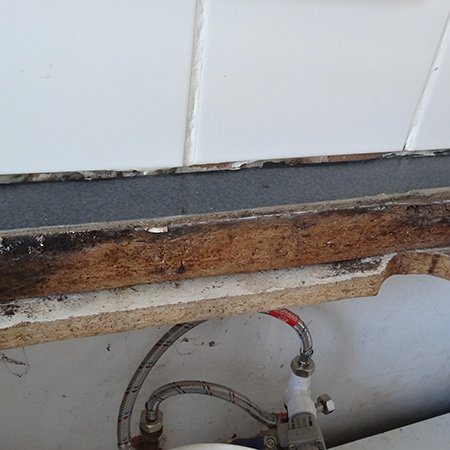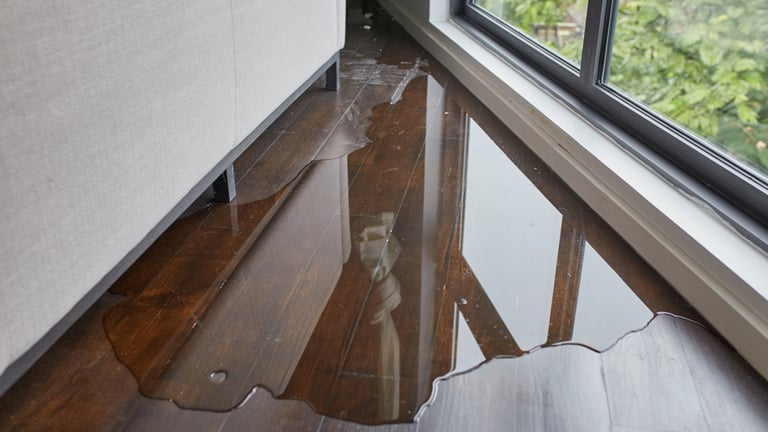Water Damage in the Kitchen: The 5 Most Common Types and Fixes
Water Damage in the Kitchen: The 5 Most Common Types and Fixes
Blog Article
This great article down below involving Causes of Water Damage in Kitchen is especially entertaining. Try it and draw your own personal final thoughts.

The kitchen is the area where a lot of water task goes on. You can rarely do anything without using water in the cooking area, from cooking, cleansing, and also doing the dishes.
Hence, inspecting your kitchen periodically is a necessity. Due to the fact that it has a higher opportunity of getting water damage due to the devices you use there, this is.
When malfunctioning, these appliances that manage water could make your kitchen area messy as well as influence the structure of your structure in the long run.
So, allow's check out some root causes of the water damage in the kitchen as well as what you should watch out for.
Some Reasons For Water Problems in the Kitchen
These are a few root causes of water damage in the kitchen.
Faulty Drainpipe Piping
Drain Pipelines are necessary parts of our homes, specifically in our kitchens and bathrooms. They obtain damaged by getting blocked, broken, as well as ruptured. Or even worse, they can be wrongly or loosely linked; whichever the case may be, it can be a serious issue.
Malfunctioning drainpipe pipelines can create water damage and, as a result, cause mold growth as well as damage the appearance of your wall surface. It can additionally make the damaged location look messy.
It is a good idea always to inspect to guarantee that all the pipes are in great condition and get a sound pipes system to keep and also take care of any type of problems.
Faulty Kitchen Sink
The kitchen sink is an important as well as many utilized part of the kitchen area. Thus it is prone to water damage; damages such as blocked pipes, leaky pipes, and faulty faucets.
These damages can be annoying, especially when one is active in the cooking area. Nonetheless, it does not just happen without giving a sign or an idea. So here are some signs to recognize when your sink is not fine
These are the major problems that can happen to your cooking area sink. One method to quit this damage is by making certain that food particles do not obtain right into the pipes. You are likewise checking the faucets and also pipes as well as making certain that it is correctly taken care of and also in good condition.
Leaking Dishwashing machine
Dish washers make life in the kitchen much easier. Nonetheless, it is an optional kitchen home appliance and also, when available, can be a source of water damage. In addition, like other devices, it will certainly create faults in time, despite upkeep.
Among the faults is leaking with the door or underneath the dish washer. These faults develop because of age, fractures, incorrect use, loosened links to pipes, etc.
Faults because of age originated from continual usage. As a result, the door leaks due to closing as well as opening.
Also, faults from the incorrect use might cause water damage by introducing cracks to it. It is recommended to comply with the hands-on guide of the dishwashing machine to avoid this certain damages.
The leakages under the dish washer can originate from splits in the gasket, tube, and loose or wrong link to pipes or drains pipes.
This sort of leakage often goes undetected and also can be there for a long time. However, as a result of the moment structure, it can trigger as well as damage the floor mold development.
A lot more so, the longer the water stays, you will see the bending of the floor where the dish washer is. This is an excellent indication to look out for when examining if your dishwashing machine leaks. Finding as well as fixing this on time stops major water damage to your flooring.
Profits
Looking out for problems in your kitchen area can be tasking yet needed. It makes your work there less complicated as well as safer.
The causes detailed above are only a few aspects to consider, specifically if your kitchen area has a lot of home appliances.
So get a specialist plumbing solution to come about and look for any damages and obtain them repaired.
It makes your kitchen area messy as well as wet, particularly when trickling from the pipes. And also if it is dripping from the tap, it leads to water wastage.
It is an optional kitchen area device and, when readily available, can be a source of water damage. Much more so, the longer the water remains, you will observe the bending of the floor where the dish washer is. Spotting as well as repairing this on time prevents severe water damage to your floor covering.
Flooded Kitchen – What to Do
Coming home to a flooded kitchen can be an unpleasant surprise as you immediately start thinking about how much this problem will cost to fix. While the feeling can be frustrating, there are actually a number of steps you can take to eliminate extra time and costs when it comes to making the repairs and restoring the water damage. However, if you are able to make the repairs yourself, it is still important to have the area inspected by a professional to ensure that the problem does not return in the future.
What causes kitchen flooding?
Kitchens can flood for numerous reasons, some of which are out of the homeowner’s control. Overflowing sinks, for example, are just one cause of a kitchen flood. Clogs can send wastewater back up through the sink drain and into the kitchen.
Furthermore, kitchen faucets can leak when the pipes around the water supply line become corroded. Pipes can loosen or crack, and even new PVC pipes are vulnerable to developing small cracks. When gaskets wear out along areas where the pipe meets the faucet, leaks and subsequent flooding can occur.
How to clean up kitchen flood?
If the flooded area is not severe, you may be able to dry it out yourself with a mop and bucket; however, for larger areas, don’t hesitate to call a water damage restoration professional. In addition, if you can see that the problem has been ongoing for a few days or more, you will want to contact a mold remediation professional as it is likely that the fungus has developed over time. But while waiting for the technicians to arrive, you can get a head start on the drying process by taking the following steps:
Remove all excess water. If you have a shop vac that is able to remove water, this would be the most efficient tool. Otherwise, a mop and a bucket will be handy. Increase air flow. After the excess water has been removed, it is likely that the building materials and furnishings are still wet. To dry them out, turn on the air conditioner or dehumidifier. If weather conditions are dry, open the exterior windows to allow for additional air to circulate the property. However, if sewage water has seeped into the air conditioning unit, do not use it. Open drawers and cabinets. Moisture can easily accumulate within these smaller areas; be sure that they are all open to allow dry air to flow throughout the space. Avoid damaged electrical items. If any kitchen appliances, such as the toaster, blender, microwave, oven, etc. have been damaged by the water, do not use them. Have them inspected by a professional to determine if they are safe to reuse. Do not lay down magazines or newspaper. Although paper is quick to retain water, the ink will quickly bleed onto the floor and cause a bigger mess. Dry off wet furniture. If any upholstery has been damaged from the water, wipe them down thoroughly. But be careful when drying off wood furniture; this type of material becomes severely weakened after having contact with water. How to Clean Wet Cabinets in a Flooded Kitchen
A flood caused by any of the abovementioned scenarios will lead to water damaged kitchen cabinets. Cleaning the water damaged cabinets right away is important since water damage spreads quickly. Whether the cabinets are made of wood or plywood, proper cleaning tactics help salvage them.
Upon removing the standing water, remove the cabinet doors and dry them with a household fan. Keep the cabinet doors flat to prevent warping. The cabinets should also be dried—however, with multiple high-volume fans and a dehumidifier that run over the course of one full day.
https://restorationmasterfinder.com/restoration/flooded-kitchen-what-to-do/

We were made aware of that report about Most Common Causes of Residential Water Damage through a friend on our other web blog. Sharing is caring. Helping others is fun. I value reading our article about Water Damage in Kitchen.
Schedule Here Report this page